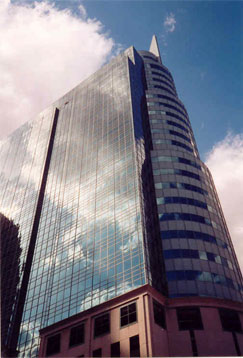Elevator Car Operations
 Height concerns and accessibility for a fire in a high-rise building are of significant concern as a fire starts and extends beyond the reach of fire departments ladders and hose streams.
Height concerns and accessibility for a fire in a high-rise building are of significant concern as a fire starts and extends beyond the reach of fire departments ladders and hose streams.
When fire department operations can no longer be considered ground based, one of our first questions are “how do we get up there”?
Utilizing an elevator to gain access to the upper floors of a High-Rise building is a viewed by most in the fire-service as a “necessary evil”.
Although there are significant concerns with an elevators use, the majority of fire departments across the country use elevators at high-rise incidents for two specific and valid reasons:
- To reduce the lead/reflex time it takes to go to work at a fire well above street level.
- In order for our members to mount an initial and sustained attack many floors above; utilizing a fire service equipped elevator allows members the opportunity to retain their physical and mental energy for their assigned objectives…not climbing stairs.
If your department is one of these, consider the following as a guide for firefighter use with elevators.
Phase 1 Operations/Elevator Car Recall
- If the car has not automatically returned to the lobby, recall the car with firefighter service keys.
* Note: Elevators should automatically return to their respective lobby or sky lobby once an alarm is activated within the building. - Walk or Ride? – If the fire is reported within 8 floors of the lobby or sky lobby, walk-up. If the fire is reported to be more than 8 floors above the lobby or sky lobby, ride-up.
- Members are to use fire service elevators only!
- If known, use a fire service elevator that is also serviced by a back-up, electrical generator.
- For safety, identify the type of shaft prior to elevator selection. If the fire is reported on floor 26 and there is a blind shaft elevator that terminates at the sky lobby on floor 20, use that elevator bank.
* Blind Shaft elevators are those elevators that begin on a specific floor and end at another…only two stops, ie floor 1 and 20, nothing in-between.
Phase 2 Operations/Car Operations
- For accountability, identify the Company designation (i.e. E-22, L-12) and elevator bank to be used at the command post.
- Limit the number firefighting personnel in the elevator. This is generally no more than 5-6 firefighters.
- Ensure all members have full PPE/SCBA/PASS and associated equipment.
- All members are to turn-on/charge SCBA’s.
- Assign a radio-equipped firefighter to operate the elevator car.
- If the elevator has a phone equipped communication system, test its use.
- Attempt to examine the shaft way opening (if possible) between the car and shaft for any water, smoke or fire. (Use flashlight, TIC, listen/look for water in the shaft) If any of these exist, utilize another elevator shaft.
- Upon entering the car, press the call cancel button to eliminate any previously made selections.
- Place the car in fire/emergency service. Select the desired floor.
- Proceed to two floors below the lowest reported fire floor. (Note: Some buildings may NOT identify a 13th floor)
- During the ascent make a series of stops every 5-10 floors (depending upon the floor destination) to ensure the car is responding to commands from within the car.
- Also during the ascent check the “Emergency Stop Button” to ensure control of the car. (Note: Forcing the car doors open may also stop runaway elevators.)
- To open the elevator car door, press and hold the “Door Open” button.
- Verify the floor and stair access location, then return the car to the lobby with a designated, radio-equipped firefighter.
Stay Safe!
Michael A. Terpak
Deputy Chief, City of Jersey City
JCFD
References:
Fireground Size-Up Chapter 9 page 346
Jersey City High-Rise SOP # 19
Strategy and Tactics for Promotional Assessment Centers
(Future text to be released Fall 07)
